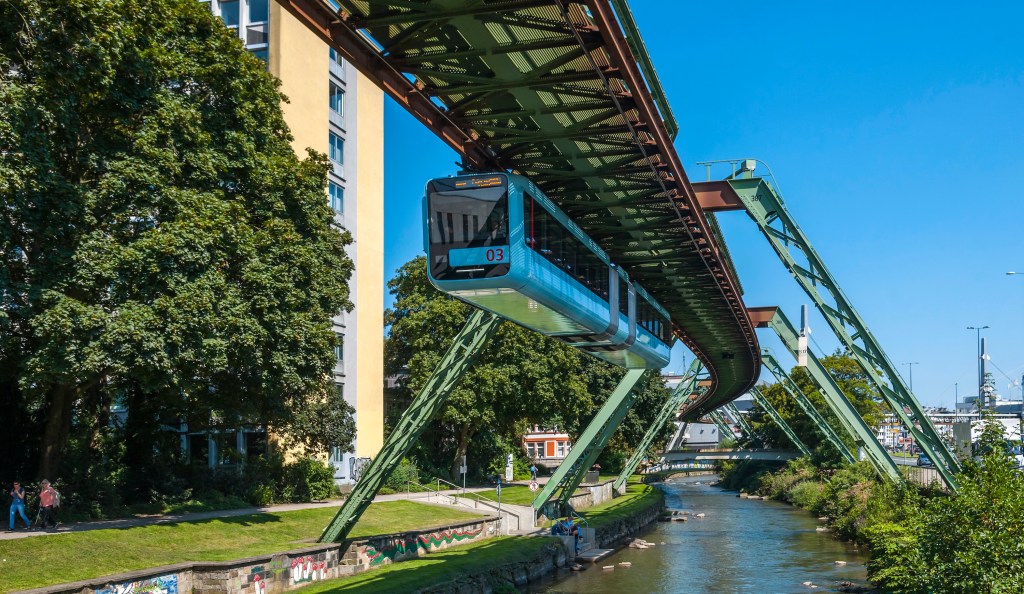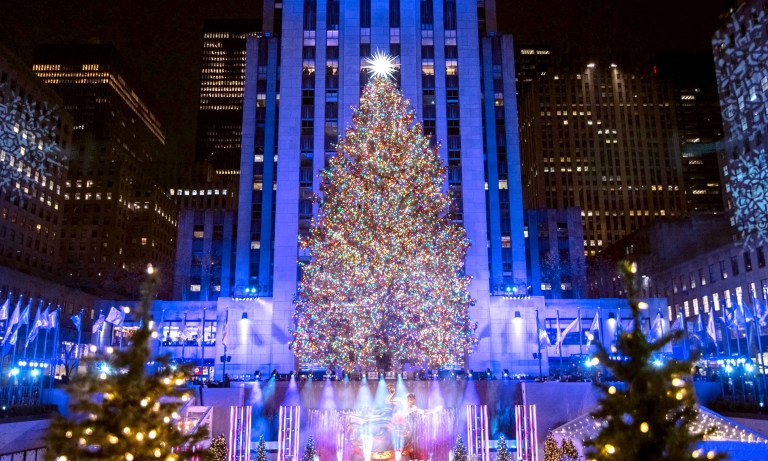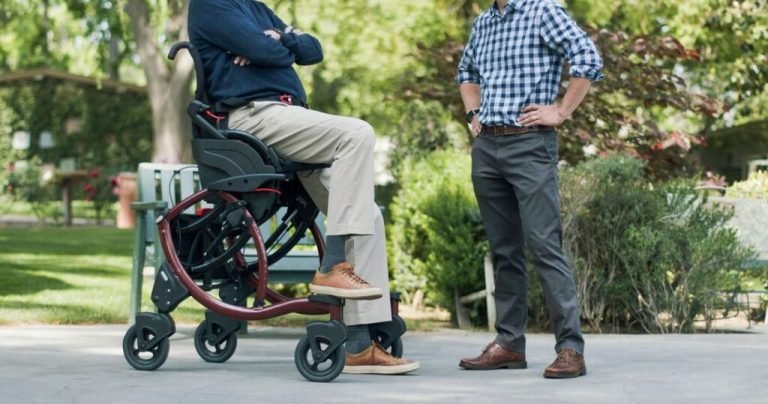A suspension railway — one that hangs upside down rather than glides above a track — might seem like a creation of the future. In Wuppertal, Germany, though, it’s an enduring symbol of the past.
The Wuppertal Schwebebahn opened in 1901 to accommodate a new influx of people living along the Wupper river. Two of its first passengers were the German Emperor Wilhelm II and his wife Auguste Viktoria, who took it for a test ride months before it became available to the public. Fast forward 124 years, and the Schwebebahn is now one of the only remaining suspension railways in the world.
“Paris has the Eiffel Tower, New York has the Statue of Liberty — and Wuppertal is known worldwide for its suspension railway,” the city’s tourism department website boasts. Around 85,000 passengers a day perch in carriage cars about 39 feet above the river and 26 feet above the street to get to and from stops on the 8.3-mile route.
One of those passengers is Inga Kantas, who grew up riding the electric train and whose enthusiasm for the mode of transportation extends so far that she even got married on it in 2006. In a video segment for BBC News, she attributes the railway’s popularity with residents to its uniqueness and ability to get them where they need to be in a short amount of time — an end-to-end journey takes just 30 minutes.
Last October, a museum devoted to the Schwebebahn opened its doors, inviting both residents and tourists to immerse themselves in the railway’s history. “Population increased massively in the middle of the 19th century and industrialization came,” Thomas Helbig, the museum’s managing director, explained to the outlet.

Exhibits include a Lego replica of the railway and a virtual reality tour, during which guests sit in an original carriage car and are transported back in time, experiencing a ride over the city as it looked in 1929.
The Wuppertal Schwebebahn has persevered through disaster — it was badly bombed during World War II but bounced back quickly, becoming fully operational again less than a year after the fighting in Europe ended.
“I don’t think there’s a more iconic symbol representing both Wuppertal and Barmen than the Schwebebahn,” Rosemarie Weingarten, who was born in the area in 1933, told CNN in 2022. “It has always been there for me and I’m proud that it is still running.”
As new and exceedingly innovative trains have taken to the rails in recent years, fans and aficionados show no signs of losing interest in the city’s claim to fame.
“My fascination with the Schwebebahn lies in the way it was constructed over 100 years ago,” said Cologne-based architect Christian Busch. “To realize such a project without computer-aided systems would be unthinkable today.”
He continued: “A ride in the Schwebebahn allows the passenger an extraordinary insight into the life of the local residents and really looks like a fairground attraction from days gone by.”











